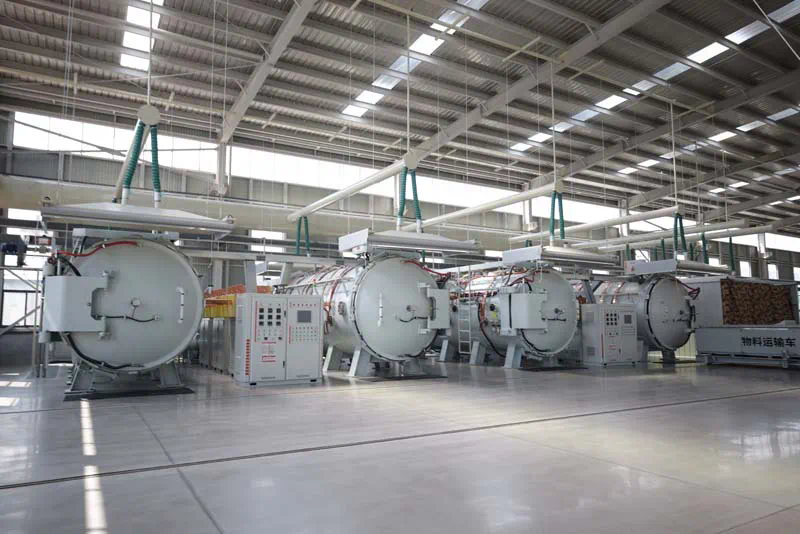Carbon bonded silicon carbide crucibles are specialized containers that play a critical role in high-temperature processes, particularly in the metallurgy and ceramics industries. They are engineered to withstand extreme thermal conditions while maintaining structural integrity and performance. This article delves into the features and benefits of carbon bonded silicon carbide crucibles, exploring their applications, advantages, and the technology behind their manufacturing.
p Carbon bonded silicon carbide (CBSC) crucibles are made from a composite material that combines silicon carbide with a carbon bonding agent. This unique composition provides exceptional thermal resistance, mechanical strength, and chemical stability. The manufacturing process involves a meticulous blend of high-purity silicon carbide grains and carbon, which are then shaped and sintered at high temperatures to create a durable and reliable product.
h2 Features of Carbon Bonded Silicon Carbide Crucibles
h3 Thermal Resistance
p One of the most significant features of CBSC crucibles is their remarkable thermal resistance. They can withstand temperatures exceeding 1600°C (2912°F) without deformation or degradation. This capability makes them ideal for applications in metal melting, glass production, and other high-temperature processes where traditional materials may fail.
h3 Chemical Stability
p CBSC crucibles exhibit excellent resistance to chemical attack, especially against molten metals and slags. The unique bonding structure minimizes the risk of contamination, ensuring that the purity of the materials being processed remains intact. This characteristic is particularly crucial in industries where the quality of the final product is paramount.

h3 Mechanical Strength
p The mechanical strength of carbon bonded silicon carbide crucibles is another defining feature. These crucibles are designed to handle the stresses associated with rapid temperature changes, heavy loads, and mechanical handling. Their robust construction reduces the likelihood of cracking or breaking, thus enhancing operational efficiency.
h3 Lightweight Design
p Despite their strength, CBSC crucibles are relatively lightweight compared to other refractory materials. This feature facilitates easier handling and transportation, contributing to overall operational efficiency and safety in industrial environments.
h2 Benefits of Using Carbon Bonded Silicon Carbide Crucibles
h3 Improved Longevity
p The durability of carbon bonded silicon carbide crucibles translates to improved longevity in high-temperature applications. Users can expect significantly longer service life compared to traditional crucibles, leading to reduced replacement costs and less downtime in production processes.
h3 Enhanced Productivity
p The ability to withstand extreme temperatures and chemical environments allows for uninterrupted operation. Industries utilizing CBSC crucibles can expect higher productivity rates as these crucibles minimize failures and the need for routine maintenance.
h3 Cost-Effectiveness
p Although the initial investment in carbon bonded silicon carbide crucibles may be higher than traditional alternatives, the long-term cost savings are substantial. Their longevity and reduced failure rates lead to lower overall costs associated with material replacement, labor, and downtime.
h3 Versatility in Applications
p CBSC crucibles are highly versatile and applicable in various industries, including metallurgy, ceramics, and glass manufacturing. Their ability to accommodate different materials and processes makes them a preferred choice for many manufacturers seeking reliable and efficient solutions.
h2 Applications of Carbon Bonded Silicon Carbide Crucibles
h3 Metal Melting
p In the metallurgy industry, CBSC crucibles are widely used for melting non-ferrous metals such as aluminum, copper, and zinc. Their ability to resist thermal shock and corrosive environments ensures that the 20 standard silicon carbide crucible melting process is efficient and produces high-quality results.
h3 Glass Production
p The glass manufacturing sector also benefits from the use of carbon bonded silicon carbide crucibles. They are utilized for melting raw materials at high temperatures, providing an environment that prevents contamination and promotes the formation of homogeneous glass products.
h3 Ceramics and Refractories
p In ceramics production, CBSC crucibles are employed to sinter and fire various ceramic compositions. Their high thermal stability enables the processing of advanced ceramics, which require stringent temperature controls to achieve desired properties.
h3 Research and Development
p Laboratories and research facilities use CBSC crucibles for experimental melting and synthesis processes. Their reliability and consistent performance make them suitable for innovative projects requiring precise control over thermal conditions.
h2 Technology Behind Carbon Bonded Silicon Carbide Crucibles
h3 Material Composition
p The effectiveness of carbon bonded silicon carbide crucibles lies in their material composition. High-purity silicon carbide grains provide thermal conductivity and strength, while the carbon bonding agent enhances durability and chemical resistance. The combination results in a crucible capable of withstanding the harshest processing environments.
h3 Manufacturing Process
p The manufacturing of CBSC crucibles involves several key steps: mixing, shaping, drying, and sintering. During the mixing phase, silicon carbide grains and carbon are blended to achieve a homogeneous composition. The shaping process often uses advanced molding techniques to create precise dimensions. Following shaping, the crucibles undergo drying to remove moisture before being sintered at elevated temperatures to achieve the desired hardness and strength.

h3 Quality Control

p To ensure the highest standards of performance and reliability, rigorous quality control measures are implemented throughout the manufacturing process. Each batch of crucibles undergoes thorough testing for thermal resistance, mechanical strength, and chemical stability, guaranteeing that they meet industry specifications.
h2 Conclusion
p Carbon bonded silicon carbide crucibles represent a sophisticated solution for high-temperature applications across multiple industries. Their unique features, such as thermal resistance, chemical stability, and mechanical strength, offer numerous benefits, including improved longevity, enhanced productivity, and cost-effectiveness. As industries continue to evolve and demand more efficient and reliable materials, CBSC crucibles are likely to remain at the forefront of high-performance solutions. With ongoing advancements in manufacturing technologies and material science, the future of carbon bonded silicon carbide crucibles looks promising, paving the way for even broader applications and enhanced performance.
p In conclusion, the integration of carbon bonded silicon carbide crucibles into industrial processes not only addresses current challenges but also sets the stage for future innovations. As manufacturers seek ways to improve efficiency and reduce costs, these crucibles will undoubtedly play a vital role in achieving those goals.
https://smartfactoryinsights.com/


